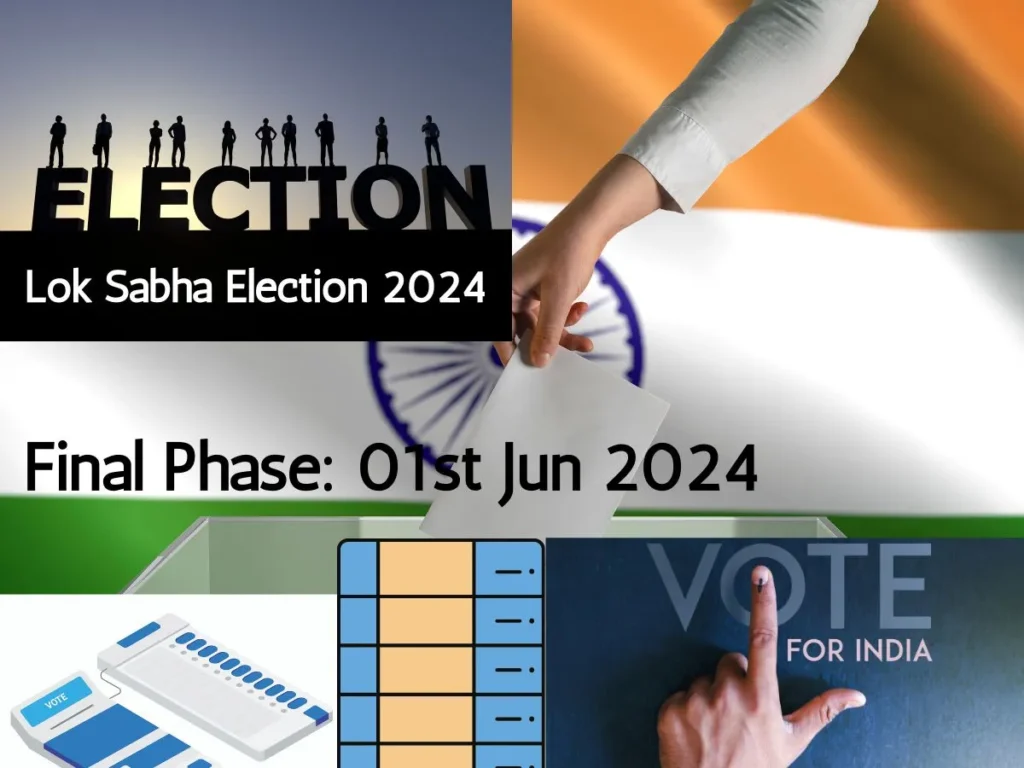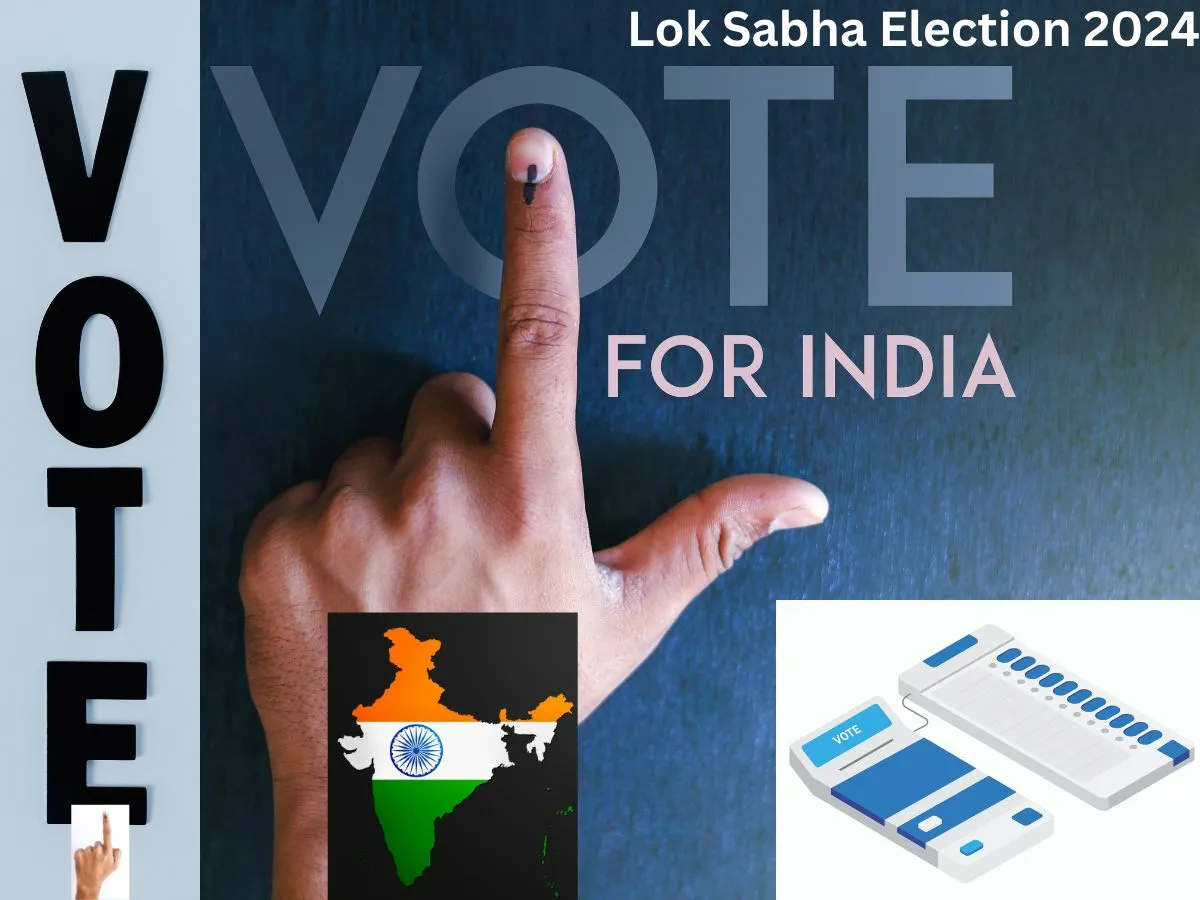
Table of Contents
ToggleLok Sabha Election 2024: Comprehensive Overview of the Final Phase of Voting
Discover the key details of the seventh and final phase of the Lok Sabha elections 2024, covering crucial constituencies, prominent candidates, campaign strategies, and the potential implications for India’s political future.
As India approaches a crucial juncture in its democratic process, the seventh and final phase of the 2024 Lok Sabha elections is underway today, June 1. This phase is particularly significant as it covers 57 constituencies across eight states and one Union Territory. The outcome of these elections will play a pivotal role in shaping India’s political landscape for the coming years. This comprehensive overview delves into the key constituencies, notable candidates, campaign strategies, and the broader implications of this phase.

Constituencies and States in Focus
The final phase includes a diverse array of constituencies from the following states:
- Uttar Pradesh (13 seats): Varanasi, Mahrajganj, Gorakhpur, Kushinagar, Deoria, Bansgaon, Ghosi, Ghazipur, Ballia, Salempur, Chandauli, Mirzapur, Robertsganj.
- Bihar (8 seats): Nalanda, Patna Sahib, Pataliputra, Arrah, Buxar, Sasaram, Karakat, Jahanabad.
- Punjab (13 seats): Gurdaspur, Amritsar, Khadoor Sahib, Jalandhar (SC), Hoshiarpur (SC), Anandpur Sahib, Ludhiana, Fatehgarh Sahib (SC), Faridkot (SC), Firozpur, Bathinda, Sangrur, Patiala.
- West Bengal (9 seats): Barasat, Basirhat, Diamond Harbour, Dum Dum, Jaynagar, Jadavpur, Kolkata Dakshin, Kolkata Uttar, Mathurapur.
- Odisha (6 seats): Mayurbhanj, Balasore, Bhadrak, Jajpur, Jagatsinghpur, Kendrapara.
- Himachal Pradesh (4 seats): Kangra, Mandi, Hamirpur, Shimla.
- Jharkhand (3 seats): Dumka, Godda, Rajmahal.
- Chandigarh (1 seat): Chandigarh.
This phase sees 904 candidates vying for these 57 seats, highlighting the competitive nature of the elections.
Prominent Candidates and Critical Electoral Battles
Several high-profile candidates are contesting in this final phase, making it a key segment of the electoral process.
- Narendra Modi (BJP) – Varanasi, Uttar Pradesh: The Prime Minister is contesting for re-election from Varanasi, a seat he has held since 2014. His main challenger is Ajay Rai from the Congress party.
- Vikramaditya Singh (INC)- Mandi, Himachal Pradesh: An actress Kangana from BJP is making her political debut from Mandi, a crucial seat traditionally held by the Congress.
- Ravi Kishan (BJP) – Gorakhpur, Uttar Pradesh: The actor and sitting MP is running again from Gorakhpur, competing against Samajwadi Party’s Kajal Nishad.
- Abhishek Banerjee (TMC) – Diamond Harbour, West Bengal: Mamata Banerjee’s nephew and a significant TMC leader, is contesting from this critical seat.
- Misa Bharti (RJD) – Pataliputra, Bihar: The daughter of RJD leader Lalu Prasad Yadav is challenging BJP’s Ram Kripal Yadav in this constituency.
These candidates are pivotal figures whose victories could significantly impact the national political scene.
Campaign Strategies and Central Issues
The campaign strategies employed by major political parties have been intense and multifaceted:
- Bharatiya Janata Party (BJP): Led by prominent figures such as Narendra Modi, Amit Shah, and Yogi Adityanath, the BJP has focused on themes like national security, economic development, and social welfare.
- Indian National Congress (INC): Rahul Gandhi and Priyanka Gandhi have concentrated on issues like unemployment, inflation, and social justice, aiming to present a robust alternative to the BJP.
- Trinamool Congress (TMC): Mamata Banerjee and her nephew Abhishek Banerjee have highlighted regional identity and welfare schemes initiated by the state government.
- Regional Parties: Leaders like Nitish Kumar (JD-U) in Bihar, Naveen Patnaik (BJD) in Odisha, and Akhilesh Yadav (SP) in Uttar Pradesh have focused on local issues and their grassroots support bases.
Implications of the Final Phase
The results of the final phase are poised to have significant repercussions:
- Control of Key States: Outcomes in Uttar Pradesh, Punjab, and Bihar will be critical due to the substantial number of seats at stake.
- Leadership and Prime Ministerial Prospects: Re-election of leaders such as Narendra Modi will be pivotal for the future government formation and policy direction.
- Regional Influence: The performance of regional parties will influence coalition politics and regional power dynamics.
- Policy Direction: The new government’s approach to economic reforms, social welfare, and national security will be shaped by the election results.
Voter Sentiments and Historical Context
Several factors influence voter behavior in this election:
- Economic Challenges: Issues such as inflation, unemployment, and the global economic situation have been central to voter concerns.
- Social Issues: Caste, religion, and regional identity continue to play significant roles in voter decisions.
- Historical Trends: Past voting patterns provide insights into potential outcomes, with states like Uttar Pradesh being crucial battlegrounds.
Ensuring Fair Elections
The Election Commission has implemented several measures to ensure a smooth voting process:
- Security Measures: Extensive security arrangements have been made to maintain law and order during the elections.
- Voter Facilitation: Initiatives to facilitate voter participation include setting up polling booths in remote areas and providing support for disabled voters.
- Technology Use: Electronic voting machines (EVMs) and voter-verifiable paper audit trails (VVPATs) are being used to enhance transparency. Though opposition parties are opposing use of EVMs since long, as hacking or manipulating an electronic device can’t be ruled out.
Anticipating the Results
The counting of votes is scheduled for June 4, 2024. The results will:
- Determine Government Formation: The party or coalition securing a majority will form the government.
- Influence Policy Agenda: The election outcome will guide the policy direction on key issues.
- Shape Political Alliances: Post-election, new political alignments and alliances are likely to emerge.
Conclusion
The seventh and final phase of the 2024 Lok Sabha elections is a defining moment for India. The results will not only reflect public opinion on the current government but also set the course for the country’s future. As voters cast their ballots, the nation awaits the outcome with anticipation, knowing that the decisions made today will shape the political landscape for years to come.
